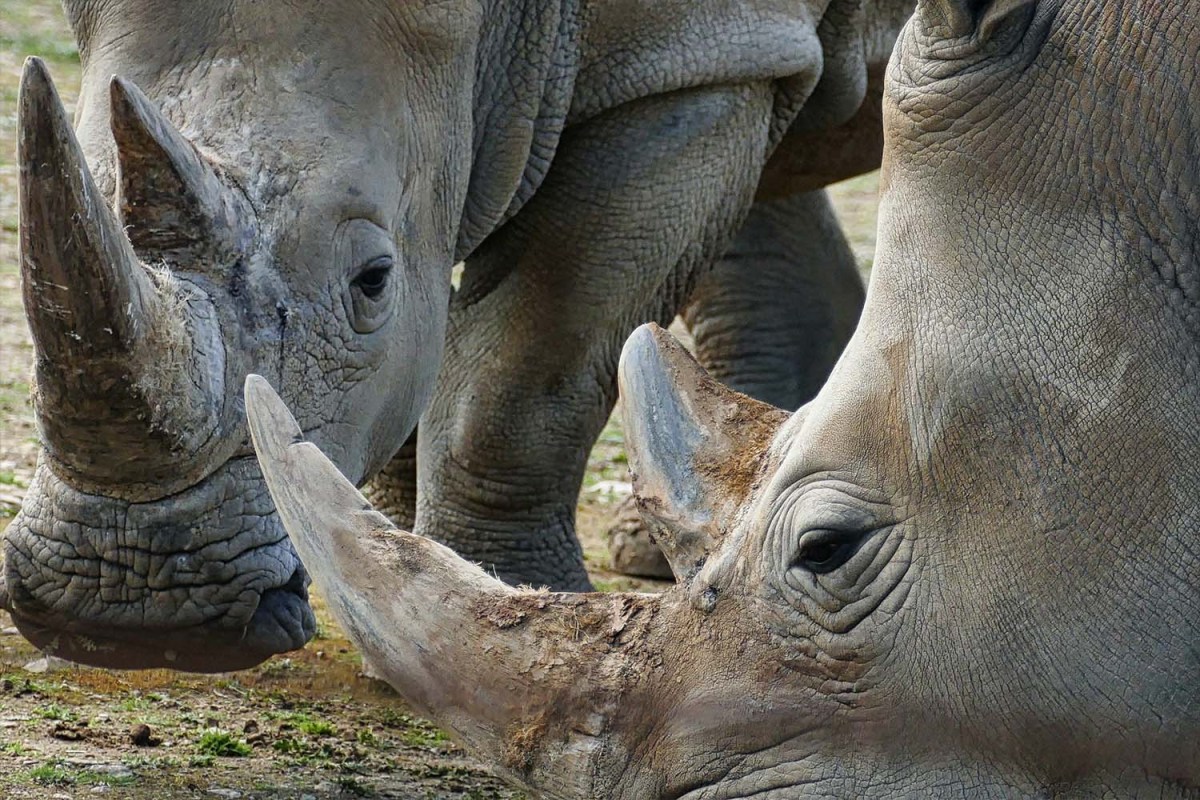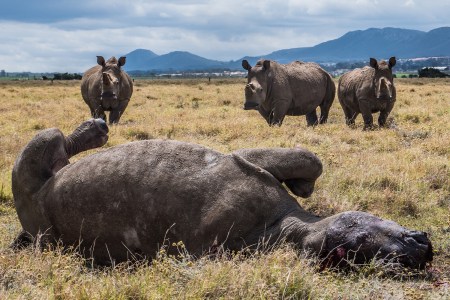What started out as a plan to combat poaching has morphed into a conservation operation for John Hume, one that’s 2,000-rhinos strong.
According to National Geographic, nearly 15 years ago, Hume launched a breeding farm on his own “vast, privately owned savanna” in South Africa with nearly 200 southern white rhinos — a “nearly threatened” species, and the only of the five rhino species that is not currently endangered. That is, at least in part, thanks to Hume’s efforts. The legal selling of his rhinos’ horns allowed Hume to expand his herd from 200 to 2,000. Yes, 2,000 rhinoceroses.
Now, I know what you’re probably thinking. The selling of his rhinos’ horns? Are they not the number one driver of rhinoceros poaching, the thing Hume claims to want to eradicate?
For the uninitiated, rhino horns are made of keratin — the same material as human fingernails — and there are ways to remove them without causing pain to the animal, and without damaging growth plates so that they eventually grow back (at a rate of around four inches per year).
Hume’s hope in humanely removing and selling his rhinos’ horns was that “prices would eventually drop and make poaching less attractive.” But, as you can imagine, keeping an operation of this scale running is no small (financial) feat — Hume spends $425,000 per month keeping it afloat — which is why the entire 21,000-acre farm will soon be put up for auction online, with a starting bid of $10 million.
Inside the Hidden World of Rhino Poachers
A thrilling new podcast explores the complicated issues surrounding the rise of this horrendous practiceThe first and most obvious question: Who the hell is going to buy a farm with 2,000 rhinos? Well, according to Hume, someone with a “passion for conserving rhinos and the means to keep the breeding project going.” That is, someone with a big heart and bigger wallet. The likelihood of scoring both feels admittedly slim, particularly given the lack of response Hume’s received so far — last year he announced his intent to release a hundred of his white rhinos into the wild each year, but no one offered to fund the effort.
That said, “state-run entities, provincial level parks within South Africa, private reserves, zoological institutions or foreign countries” may still come forward for the auction, National Geographic notes. And should you, an independent buyer with $10 million, a penchant for conservation and a soft spot for white rhinos feel so inclined? The sale begins on April 26 and ends on May 1 — international Save the Rhino Day — and will also include five hippos, 11 giraffes, as well as hundreds of buffalo, sheep and goats.
Thanks for reading InsideHook. Sign up for our daily newsletter and be in the know.



















